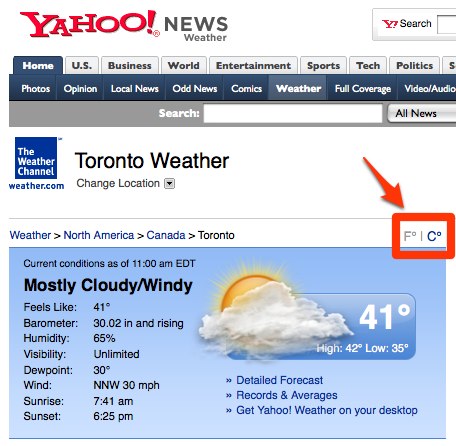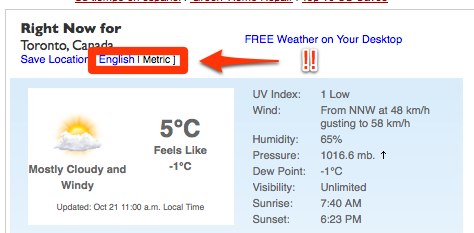In late October last year, I travelled to North America. One leg of the trip was a flight from San Francisco (think sun, palm trees, T-shirt weather) to Toronto. This was my second trip to Toronto, and the first had taken place during the coldest week of 2007, so this time I wasn’t going to be caught unprepared: I consulted the weather forecast beforehand. Online, of course.
I used two services, weather.com and Yahoo! Weather.
Online weather services have to deal with the problem that some visitors will prefer temperatures displayed in degrees Fahrenheit while others are used to thinking in degrees Celsius. Weather sites typically make an initial guess, maybe based on the visitor’s IP address, and then provide a little link with a bit of Javascript behind it, so that the temperature scale can be changed with one click. [There are better ways than going by IP address, but that’s for another post.]
Here is how Yahoo! handles this internationalization task:

Nothing special about this, though I’d maybe have expected °C and °F. The surprise was weather.com’s temperature selector:

English vs metric? Huh. Turns out, “metric” is not entirely off-base: We may be thinking of units of length, area, volume, mass and weight, but degrees Celsius is indeed part of the original metric system. But it’s not the SI temperature scale: that would be Kelvin (not “degrees Kelvin”, btw). But there’s simply no justification for “English”. Maybe they originally used “imperial”, and someone pointed out that degrees Fahrenheit aren’t considered imperial units either.
The bottom line: don’t complicate matters when simple does just fine.